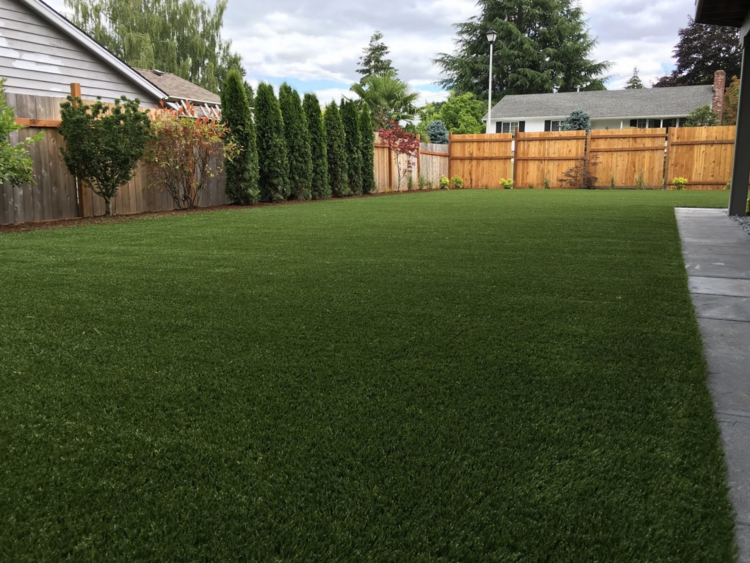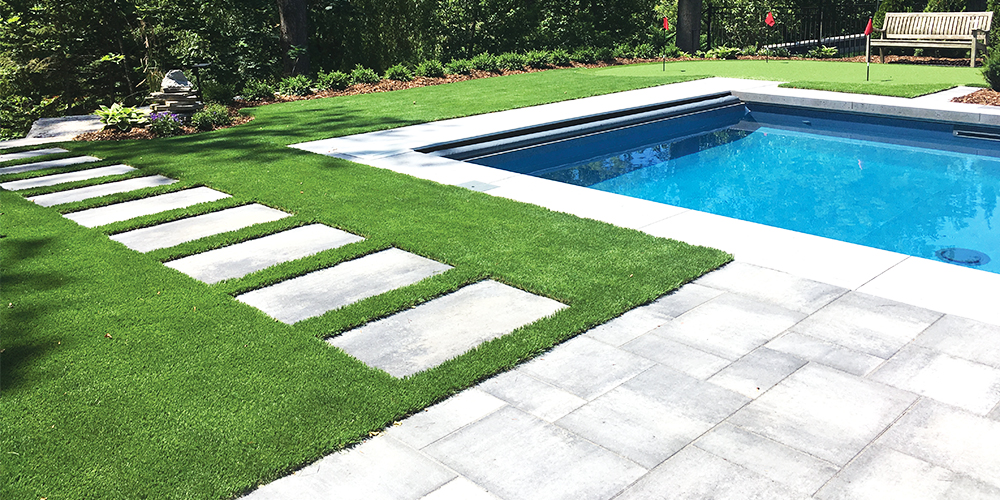Explore the Environmental Advantages of Opting for Artificial Turf Solutions
The fostering of man-made turf remedies provides a compelling possibility to attend to pressing ecological difficulties. By significantly lowering water usage and minimizing the application of dangerous chemicals, these alternatives not just promote sustainable landscaping yet likewise safeguard neighborhood ecosystems. The lower carbon footprint linked with reduced upkeep activities adds to a more lasting approach to land administration. The implications of these advantages prolong beyond mere conservation initiatives, raising concerns about their lasting impact on habitat conservation and total ecological balance. Discovering these measurements reveals a complex interaction worth thinking about.
Water Preservation Conveniences
Among the most considerable advantages of synthetic grass is its capacity to conserve water. Standard turf lawns call for substantial watering, especially in areas vulnerable to dry spell or water restrictions. In contrast, synthetic grass does not need watering, dramatically minimizing the general need for water sources. This function is particularly helpful in arid regions where water deficiency is a pressing worry.
By removing the need for normal watering, artificial turf adds to sustainable landscape methods and aids reduce the ecological influence of excessive water consumption. The conservation of water extends to the reduction of drainage, which can lead to dirt erosion and river pollution.
Furthermore, the installation of synthetic grass allows towns and property owners to allot water sources more successfully, concentrating on crucial uses such as alcohol consumption water and farming. The shift in the direction of artificial turf not only advertises accountable water usage but likewise straightens with broader ecological goals targeted at maintaining natural deposits.
As communities progressively focus on sustainability, the water preservation advantages of fabricated turf present a compelling case for its adoption in residential and commercial landscaping projects.
Minimized Chemical Use
The transition to synthetic grass considerably reduces the dependence on chemical treatments frequently utilized in all-natural yard upkeep. Traditional turf management normally entails the application of pesticides, herbicides, and fertilizers to promote development and control parasites. These chemicals can pose risks to human wellness, local wild animals, and the environment, adding to soil and water contamination.
In contrast, synthetic grass gets rid of the need for these harmful materials. As soon as set up, it requires marginal maintenance, mostly containing routine cleaning and occasional infill replenishment. This decrease in chemical usage not only benefits the prompt atmosphere yet also contributes to more comprehensive eco-friendly security. By lessening the launch of synthetic substances right into the ecological community, man-made turf advertises healthier dirt and water systems.
Additionally, the absence of chemical drainage connected with synthetic grass setups helps protect local waterways from pollution, sustaining water life and keeping biodiversity. Artificial turf companies phoenix. As communities progressively focus on sustainable methods, selecting synthetic grass presents a feasible solution that lines up with environmental conservation objectives. Through this change, homeowner can delight in lavish green spaces without endangering eco-friendly wellness, leading the way for a much more lasting future
Reduced Carbon Footprint

Furthermore, the installation of man-made lawn can cause substantial water conservation. Natural lawns call for significant quantities of water for irrigation, which not only contributes to the carbon footprint related to water extraction and treatment however likewise stress regional water sources. On the other hand, fabricated lawn requires marginal upkeep, calling for no watering, therefore considerably minimizing water use and its connected power expenses.
Furthermore, the durability of fabricated lawn click here for info contributes to its reduced carbon impact. With a lifespan of up to 15 years or more, the need for frequent replacements is lessened, resulting in less waste and lower power intake in production and disposing of traditional turf alternatives. Overall, synthetic grass provides a sustainable alternative for eco aware landscape design.
Environment Preservation
Habitat conservation is a critical factor to consider in the debate over landscape design selections, especially when contrasting synthetic grass to natural grass. All-natural grass lawns often require substantial upkeep, consisting of making use of chemicals, herbicides, and plant foods, which can negatively influence regional environments. These chemicals can seep right into the soil and waterways, damaging native plants and animals and interfering with regional habitats.
On the other hand, synthetic grass presents a chance to reduce the environmental footprint of landscaping. By selecting synthetic yard, house owners can minimize the interruption of all-natural habitats related to typical lawn treatment techniques. Synthetic grass eliminates the need for hazardous chemicals, consequently protecting close-by wild animals and preserving the honesty of bordering environments. Moreover, the installation of synthetic grass can result in the conversion of former lawn locations into even more biodiverse landscapes, such as pollinator yards or indigenous plant areas, which can support local wildlife.
Ultimately, the shift to man-made lawn not only conserves water and minimizes upkeep initiatives but also cultivates an extra unified connection between human activities and the all-natural setting, advertising habitat preservation while doing so.
Long-Term Sustainability
Lasting sustainability is a crucial variable in reviewing the advantages of synthetic turf over typical yard lawns. One of one of the most considerable advantages of synthetic grass is its sturdiness; it can last up to 15-20 years with marginal upkeep, whereas natural grass calls for regular reseeding and replacement. This long life minimizes the need for consistent resources, such as water, fertilizers, and chemicals, which are essential for preserving a healthy and balanced grass lawn.
In addition, fabricated grass adds to a decrease in carbon exhausts connected with yard care devices. Traditional yards frequently call for gas-powered mowers, leaners, and blowers, every one of which add to air contamination. Arizona artificial turf. In contrast, synthetic grass removes the requirement for such equipment, advertising a cleaner environment
Moreover, the manufacturing of man-made turf progressively uses recycled products, boosting its sustainability profile. As makers take on environmentally friendly practices, the environmental impact of artificial turf continues to lessen.

Final Thought
The fostering of synthetic grass remedies offers substantial environmental Learn More benefits, consisting of significant water conservation, minimized dependence on damaging chemicals, and a lower carbon footprint. Man-made lawn help in protecting all-natural environments by minimizing land disruption and promoting long-lasting sustainability with the use of long lasting products. Collectively, these variables best site underscore the possibility of man-made turf to contribute favorably to environmental health and supply a practical choice to traditional landscape design practices in an increasingly resource-conscious world.
In contrast, fabricated grass does not need watering, substantially reducing the general demand for water resources. By minimizing the release of synthetic compounds right into the environment, fabricated turf promotes much healthier soil and water systems.
Furthermore, the installment of man-made lawn can result in significant water preservation. In comparison, man-made grass needs very little upkeep, needing no watering, thus substantially decreasing water usage and its associated power costs.
